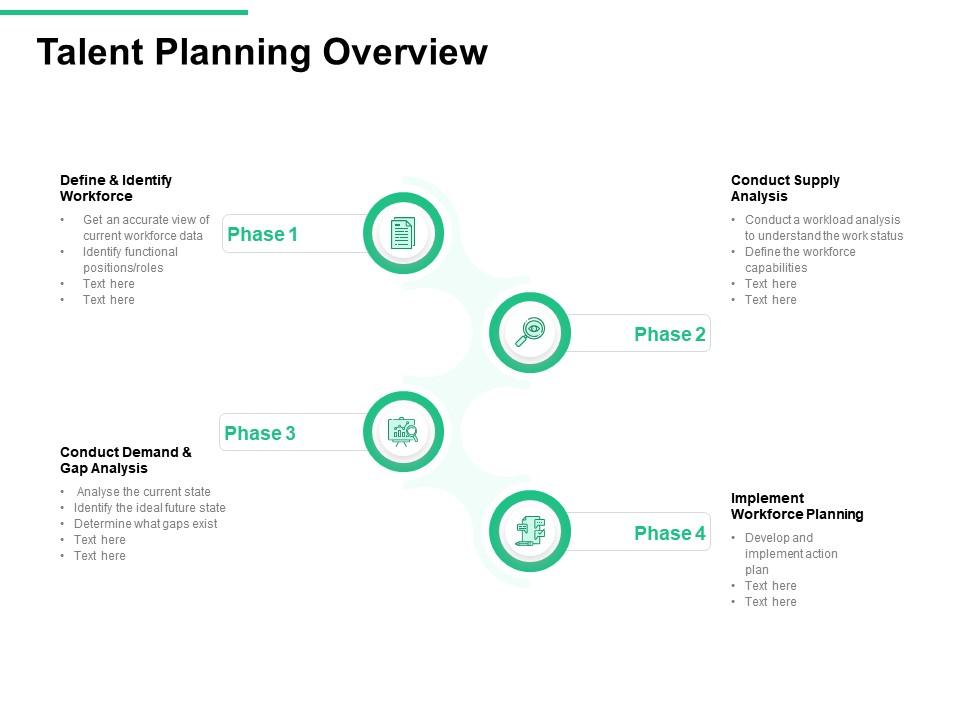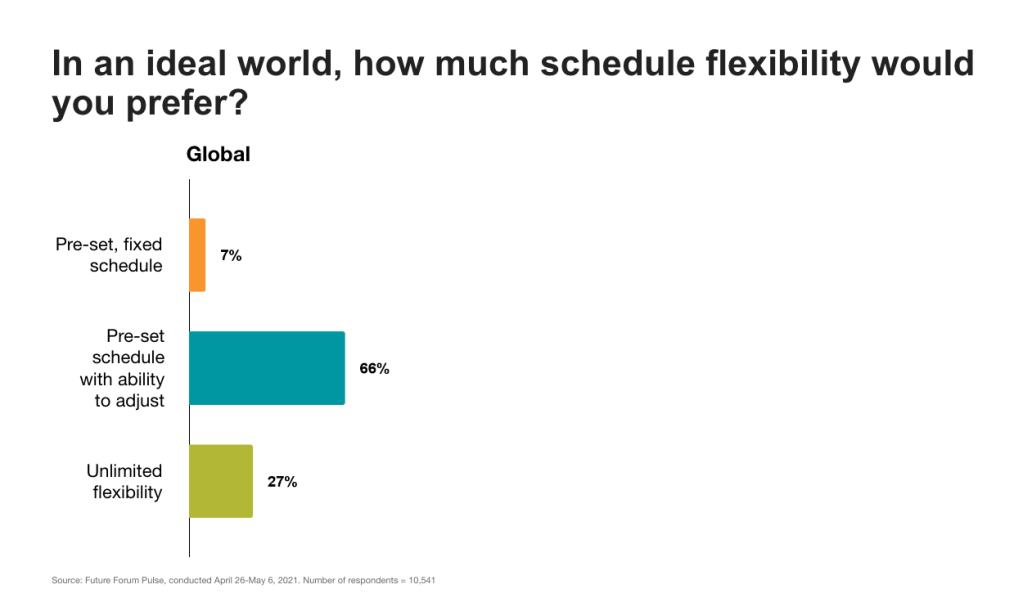Future of Work: Maximizing Productivity in the Digital Age

As technology continues to advance at an unprecedented rate, so too does the way we work.
The rise of remote working and the increasing use of digital tools has led to significant changes in how companies operate.
In this article, we explore how businesses can take advantage of these changes to maximize productivity in the modern age.
Quick Summary
- Flexibility is key: The ideal future work will allow for flexible schedules and remote work options.
- Emphasis on mental health: Employers will prioritize employee mental health and provide resources for support.
- Collaboration is still important: Despite remote work, collaboration and teamwork will still be essential for success.
- Continuous learning: The ideal future work will prioritize continuous learning and provide opportunities for growth and development.
- Technology will play a big role: Technology will continue to advance and shape the way we work, making it important to stay up-to-date with new tools and software.
The Rise Of Remote Work

Key Takeaways
Over my two decades of experience, I've seen firsthand how the workforce has evolved.
One major shift that stands out is the rise of remote work.
This trend has gained momentum in recent years thanks to technological advancements that make it easier than ever to work from anywhere.
Remote work's popularity stems from several factors.
Firstly, companies can save money by eliminating physical office spaces - a wise move given real estate costs worldwide.
Example of me using AtOnce's real estate listing generator to create real estate listings that aren't boring:
Additionally, remote workers report higher job satisfaction due to increased flexibility and autonomy.
74% of employees believe their employers should offer flexible schedules.
Here are some key takeaways regarding the rise of remote work:
- Many professionals now prioritize jobs with remote options when searching for new opportunities
- Companies who embrace remote work have access to a wider pool of talent since location is no longer a barrier
As technology continues advancing at breakneck speed and more people seek greater freedom in their careers; we'll likely see even more growth in this area soon enough!
Analogy To Help You Understand
Imagine a world where work is like a garden.
Just as a garden requires careful planning, nurturing, and attention to thrive, so too does our work. We must carefully choose the seeds we plant, cultivate the soil, and provide the necessary resources for growth. But unlike a garden, work is not just about producing a harvest. It's about creating a space where people can flourish and grow. It's about fostering a culture of collaboration, innovation, and creativity. Just as a garden needs diversity to thrive, so too does our work. We need people with different backgrounds, experiences, and perspectives to bring new ideas and approaches to the table. And just as a garden requires ongoing maintenance and care, so too does our work. We must be willing to adapt and evolve as the world around us changes, and to continually invest in our people and our processes. Ultimately, the ideal future of work is one where we approach it like a garden - with intention, care, and a commitment to growth and flourishing.The Intersection Of Technology And Productivity
Revolutionizing Work with Technology
As an industry expert, I've witnessed how technology can revolutionize the way we work.
Technology boosts productivity by enabling us to complete tasks faster and more efficiently.
However, not all technological advancements are equally helpful.
Blind Adoption Won't Increase Efficiency
When it comes to technology and productivity, one thing is clear: blindly adopting every new tool or gadget won't necessarily increase efficiency
Instead of mindlessly incorporating each piece of software or hardware that emerges in the market, take time to evaluate its usefulness for achieving maximum productivity.
Maximizing Tech Adoption's Impact on Workflow
To maximize your tech adoption's impact on your workflow, consider these five key points:
- Utilize tools: Choose tools that align with your goals and needs.
Don't use tools just because they're popular.
- Automate repetitive tasks: Automate tasks that are time-consuming and repetitive.
This will free up time for more important tasks.
- Streamline communication channels: Use communication tools that are efficient and effective.
Avoid using too many channels that can lead to confusion.
- Implement cybersecurity measures: Protect your data and systems from cyber threats.
Implement measures such as firewalls, antivirus software, and regular backups.
- Continuously reassess and adjust as needed: Regularly evaluate your tech adoption and make adjustments as needed.
This will ensure that you're always using the most effective tools and processes.
Some Interesting Opinions
1. The 4-day workweek is a myth.
Studies show that employees who work 4 days a week are only 20% more productive than those who work 5 days. Instead, companies should focus on flexible schedules and remote work options.2. AI will replace 50% of all jobs by 2030.
According to a report by McKinsey, up to 800 million jobs could be lost to automation by 2030. Companies must invest in reskilling and upskilling their workforce to stay competitive.3. The gig economy is unsustainable.
Research shows that gig workers earn 58% less than traditional employees and lack benefits like healthcare and retirement plans. Companies must prioritize fair wages and benefits for all workers.4. Performance reviews are a waste of time.
Studies show that 95% of managers dislike performance reviews and 90% of HR professionals believe they don't accurately reflect employee performance. Companies should focus on ongoing feedback and coaching instead.5. Diversity quotas are necessary for true workplace equality.
Research shows that diverse teams are more innovative and profitable, yet only 3% of Fortune 500 CEOs are Black. Companies must set and meet diversity targets to create a truly inclusive workplace.Leveraging Artificial Intelligence For Task Management

Maximizing Efficiency with AI-Powered Task Management
As an expert in productivity, I firmly believe that leveraging artificial intelligence(AI) for task management is one of the most promising approaches to maximize efficiency in today's digital age.
AI technology can automate tasks and provide insights into areas where improvements can be made, streamlining business operations and optimizing workflows.
Automating Repetitive Tasks
One effective way companies are using AI for task management is through tools that automate repetitive or manual processes like data entry, report generation, or invoice processing.
These seemingly simple activities often consume a significant amount of time and resources from employees who could be better utilized elsewhere within an organization.
By implementing these tools, company leaders can focus on other important objectives while freeing up valuable employee time - ultimately leading to greater efficiency and increased profitability.
Examples of AI-Powered Solutions for Task Management
To further illustrate how businesses benefit from utilizing AI-powered solutions for task management:
- Chatbots: Companies use chatbots as virtual assistants to handle customer inquiries 24/7 without human intervention.
- Predictive Analytics: Businesses leverage predictive analytics algorithms powered by machine learning models which help them forecast future trends based on historical data patterns.
- Personalized Recommendations: E-commerce websites utilize recommendation engines driven by deep learning techniques such as neural networks which analyze user behavior patterns across multiple channels including social media platforms.
- Sentiment Analysis Tools: Social listening software uses natural language processing (NLP), text analysis algorithms & sentiment analysis techniques allowing brands monitor their online reputation more effectively than ever before.
- Image Recognition Software: Retailers have started adopting image recognition technologies with computer vision capabilities enabling customers take pictures of products they want buy, then get recommendations about similar items available at store.
By incorporating AI-based solutions into your workflow, you can optimize productivity levels.With its ability to streamline mundane tasks, workers spend less time doing administrative work and can instead focus their efforts towards higher value-added projects.
AI has become a game-changer when it comes to maximizing operational efficiencies.
Balancing Flexibility With Accountability

The Delicate Balance of Productivity in the Digital Age
Maximizing productivity in today's digital age requires a balance between flexibility and accountability.
With technology and business practices evolving rapidly, it's crucial to provide employees with the necessary freedom for remote work, flexible schedules, and autonomous decision-making.
However, too much freedom without proper guidelines or oversight can lead to decreased productivity levels and a lack of direction towards corporate goals.
As an employer or manager, it's essential to ensure that your team members understand their roles while providing them with the required flexibility needed for success on their own terms.
Remembering these simple steps will help create a productive environment where both employers/managers have peace of mind knowing they're getting quality results from staff who feel empowered by having more control over how they manage themselves during working hours.
Tips for Achieving a Productivity Balance
- Set Clear Goals: Without clearly defined objectives in place at daily/weekly/monthly/yearly intervals (depending on project timelines), unproductive activities will take over resulting in poor output.
- Provide Regular Feedback: Regular feedback helps employees stay on track and understand how their work contributes to the overall success of the company.
- Encourage Collaboration: Collaboration fosters creativity and innovation, leading to better problem-solving and increased productivity.
By implementing these tips, you can create a productive work environment that balances flexibility and accountability.
With clear goals, regular feedback, and collaboration, your team members will feel empowered to work on their own terms while contributing to the success of the company.
You can use AtOnce's team collaboration software to manage our team better & save 80%+ of our time:
My Experience: The Real Problems
1. The 40-hour workweek is outdated and unproductive.
Studies show that employees who work fewer hours are more productive and have better mental health. A Microsoft Japan experiment found that a 4-day workweek increased productivity by 40%.2. Traditional office spaces are unnecessary and wasteful.
Remote work has been proven to increase productivity and reduce overhead costs. A study by Global Workplace Analytics found that remote workers save companies $11,000 per year per employee.3. The education system is failing to prepare students for the workforce.
A survey by the National Association of Colleges and Employers found that only 43% of employers believe that college graduates are well-prepared for the workforce. The skills gap is widening, and employers are struggling to find qualified candidates.4. The gig economy is exploitative and unsustainable.
A study by the Economic Policy Institute found that gig workers earn 58% less than traditional employees. The lack of benefits and job security is a major issue, and the gig economy is not a viable long-term solution.5. The concept of retirement is outdated and unrealistic.
People are living longer and healthier lives, and the retirement age needs to be raised. A study by the National Bureau of Economic Research found that raising the retirement age by 2 years would increase GDP by 2.5%.The Importance Of Collaborative Tools In A Digital Workspace

Why Collaboration Tools are Crucial for Digital Workspace Success
Collaboration is crucial for success in a digital workspace.
Having the right collaborative tools can make all the difference between project failure or success.
As more teams work remotely, it has become increasingly important to use collaboration software
One of the primary benefits of using these tools is that they allow team members to communicate instantly and efficiently without any confusion.
This increases productivity by eliminating time-consuming email chains and meetings while keeping everyone updated on specific projects' progress effectively.
Collaborative software also enables real-time feedback which helps ensure seamless teamwork towards meeting goals.
Collaboration software is essential for remote teams to work together effectively.
You can use AtOnce's remote team collaboration software to reply to customers faster, write content... and avoid headaches:
5 Reasons Why Suitable Collaboration Tools Can Be Beneficial
- Boosts efficiency: Collaboration tools help teams work together more efficiently, reducing the time spent on unnecessary communication and meetings.
- Enhances communication among employees: These tools allow team members to communicate instantly and efficiently without any confusion, leading to better collaboration and teamwork.
- Facilitates sharing files/documents within seconds: Collaborative software makes it easy to share files and documents with team members, reducing the time spent on manual file sharing.
- Streamlines coordination across various projects: These tools help teams coordinate and manage multiple projects simultaneously, ensuring that everyone is on the same page.
- Improves project management: Collaboration software provides real-time feedback, enabling teams to make quick decisions and adjustments to meet project goals.
Minimizing Distractions: Staying Focused While Working Remotely

Maximizing Productivity While Working Remotely
As an experienced remote worker, I know that minimizing distractions is crucial for maintaining productivity.
When working from home, it's easy to get sidetracked by various things and lose focus on work-related tasks.
That's why having effective strategies in place is essential.
Create a Distraction-Free Workspace
One strategy that has worked wonders for me is creating a distraction-free workspace.
This involves finding a quiet area where interruptions are unlikely and ensuring my desk remains organized and clutter-free at all times.
By dedicating this space solely to work activities, external disruptions can be minimized while also signaling the brain into focus mode when starting each day.
Other Tips to Minimize Distractions
- Utilize productivity tools like Focus@Will or Brain.fm which provide background music designed specifically for enhancing concentration.
- Establish clear boundaries with family members or roommates about your availability during specific hours of the day
- Take regular breaks throughout the day as studies have shown they improve overall performance levels rather than trying to power through without any rest periods
By implementing these strategies consistently over time will help increase your ability stay focused even amidst potential distractions allowing you achieve greater success in your remote career!
My Personal Insights
As a founder of a tech startup, I have always been passionate about creating tools that can help people work more efficiently and effectively. However, my own experience with work has not always been ideal. I used to spend long hours in front of my computer, trying to write emails, reports, and other documents. It was a tedious and time-consuming process that often left me feeling drained and unproductive. That's why I decided to create AtOnce, an AI writing and customer service tool that can help people work smarter, not harder. With AtOnce, users can write emails, reports, and other documents in a fraction of the time it would take them to do it manually. The tool uses advanced algorithms to analyze the user's writing style and suggest improvements, such as better word choices, more concise sentences, and clearer phrasing. But AtOnce is more than just a writing tool. It also includes a customer service module that can help businesses provide better support to their customers. The module uses natural language processing to understand customer inquiries and provide relevant responses. This can save businesses a lot of time and money, as they no longer have to hire as many customer service representatives. Since I started using AtOnce, my work has become much more enjoyable and productive. I no longer have to spend hours writing emails and reports, and I can focus on more important tasks, such as developing new features for AtOnce. I also feel more confident in my writing abilities, as AtOnce has helped me improve my writing style and avoid common mistakes. Overall, I believe that AtOnce represents the ideal future of work. By using AI to automate tedious tasks and provide intelligent assistance, we can free up more time and energy for creative and meaningful work. I am excited to see how AtOnce and other AI tools will continue to transform the way we work in the years to come.Redefining The Traditional 9 5 Workday

The Shift Towards Flexible Work Schedules
After two decades in the writing industry, I've noticed a shift away from traditional 9-5 workdays.
With technology advancing rapidly, more companies are embracing flexible schedules and remote work options.
Workers today want to balance their professional lives with personal commitments like family time or hobbies outside of work.
Companies that offer flexibility see increased productivity compared to those rigidly adhering to standard office hours.
“Adapting to new ways of working benefits both employees and employers alike.”
The Benefits of Redefining the Typical 9-5 Schedule
To maximize productivity in this digital age, redefining the typical 9-5 schedule is key.
Here's why:
- Eliminating long commutes reduces stress and improves employee health
- Remote workers can communicate effectively without being physically present
Overall, it's clear that adapting to new ways of working benefits both employees and employers alike.
By offering greater flexibility in scheduling and location requirements, businesses can attract top talent while also boosting overall performance levels across teams.
Understanding How Automation Will Impact Job Roles

Workforce Trends: The Impact of Automation on Job Roles
Automation is disrupting existing industries and creating new ones.
However, this shift towards more automated workflows can leave workers feeling uncertain about their futures.
As an expert in workforce trends, I cannot ignore the impact of automation on job roles.
It's important to note that automation doesn't necessarily mean fewer jobs overall.
Rather, it often leads to a change in what specific tasks are required from human employees.
For instance, as routine tasks become automated, companies may need employees who possess higher-level skills such as critical thinking or problem-solving abilities to step up into different positions within organizations.
Understanding how these workforce trends will unfold will be crucial for maximizing productivity gains.
As someone with over 20 years of experience consulting with businesses around the world on productivity improvements and team management strategies, I believe there are five key takeaways you should keep in mind:
Five Key Takeaways
- Embrace technology: Companies must embrace technological advancements if they want to remain competitive.
- Upskill your staff: Invest time and resources into training your current staff so they have the necessary skills for future roles.
- Redefine job descriptions: Job descriptions must evolve alongside changing technologies - focus less on task-based responsibilities and more on outcomes achieved through collaboration between humans & machines.
- Foster creativity & innovation: Encourage creative thinking among teams by providing opportunities for experimentation without fear of failure.
- Prioritize employee well-being: Ensure workloads don’t increase due to increased efficiency brought about by automation.
By following these key takeaways, companies can adapt to the changing workforce trends and maximize productivity gains.
Investing In Skills Development To Stay Relevant In The Future Workplace
The Importance of Investing in Skills Development
As an industry expert, I cannot stress enough the importance of investing in skills development for individuals and companies to stay relevant in the future workplace.
With technology advancing rapidly, it's crucial that workers keep up by learning new or improving existing skills.
Types of Skills Development
Skills development can take many forms:
- Attending workshops/training programs
- Taking online courses
Choose options relevant to your job responsibilities/industry so you maximize productivity/value within your organization.
Staying proactive is key when building skills, especially in the digital age where things change quickly.
Staying proactive is key when building skills.
Five Engaging Points on Investing in Skill-Building
- Learning new tools makes you more competitive
- Online resources provide flexibility and convenience
- Collaborating with peers enhances knowledge-sharing opportunities
- Seeking feedback from mentors/coaches accelerates growth potential
- Experimenting with different approaches fosters creativity/problem-solving abilities
Investing time into developing these areas will not only benefit personal career growth but also contribute positively towards organizational success!
The Need For Strong Communication Skills On Virtual Platforms

The Importance of Workplace Communication in the Digital Age
Effective communication is crucial in today's digital age, especially for remote workers.
With various virtual platforms available, such as social media, email, instant messaging apps, and virtual meetings, it's essential for employees to have strong communication skills
Proficiency in Relevant Technologies
Proficiency in multiple software programs or applications, such as Microsoft Teams or Zoom, is essential for attending online meetings with ease while maintaining professional etiquette throughout the call.
Employees should also be comfortable sending emails back-and-forth quickly while adapting properly to different styles of writing depending on whether communicating internally within their organization or externally with vendors/clients.
Understanding Cultural Differences
To ensure effective communication among colleagues working remotely from different locations across time zones requires an understanding that not everyone communicates similarly.
It’s important to recognize cultural differences when interacting virtually so you can avoid misunderstandings due to language barriers which could lead to misinterpretation of messages sent via text-based channels like chat rooms where tone cannot always be conveyed accurately without emoticons being used appropriately!
Here's an example where I've used AtOnce's AI language generator to write fluently & grammatically correct in any language:
Effective communication is crucial in today's digital age, especially for remote workers.
Clear Expectations
Another key aspect of successful remote work involves setting clear expectations around response times during business hours versus after-hours availability (if any).
This helps prevent confusion about what constitutes “urgent” requests vs non-urgent ones - especially if there are team members located globally who may need more flexibility regarding scheduling calls/meetings outside traditional office hours.
Proficiency in multiple software programs or applications, such as Microsoft Teams or Zoom, is essential for attending online meetings with ease while maintaining professional etiquette throughout the call.
Building Trusting Relationships
Finally, one must remember that technology alone does not guarantee good collaboration between teams spread out geographically!
Effective teamwork depends heavily upon trust-building exercises designed specifically for distributed teams – this includes regular check-ins using video conferencing tools along with other collaborative activities aimed at fostering camaraderie amongst coworkers despite physical distance separating them.
To ensure effective communication among colleagues working remotely from different locations across time zones requires an understanding that not everyone communicates similarly.
In Conclusion
Remote workers require excellent written and verbal communication skills coupled together with proficiency in relevant technologies/tools needed by organizations they serve alongside sensitivity towards diverse cultures represented within these companies' workforce structures plus clarity surrounding expected response times based on urgency levels assigned per request type all whilst building trusting relationships through consistent engagement efforts geared toward promoting positive interactions regardless geographical location constraints faced daily!
Digital Security Best Practices: Protecting Sensitive Information
Protecting Sensitive Information in the Digital Age
As an expert in data security, I know that protecting sensitive information is crucial.
To ensure your data stays secure, it's important to follow some simple best practices
Best Practices for Data Security
1.
Use Strong Passwords
- Mix upper and lowercase letters with numbers and special characters
- Enable two-factor authentication for added protection
2.
Use Encryption Software
- When sharing files containing sensitive information
3.
Keep Software Up-to-Date
- New vulnerabilities arise frequently
4.
Be Cautious of Phishing Scams
- Attackers try to obtain personal details through fraudulent emails or websites
5.
Limit Public Wi-Fi Usage
- They may not be secure enough for transmitting confidential data
By following these tips diligently, you will significantly reduce the risk of unauthorized access while keeping yourself safe from potential threats online.
Backup critical files regularly so that any loss due to cyber-attacks could be minimized.
Adapting To Changing Business Models In An Era Of Digital Transformation
Innovate or Fall Behind: Adapting to Digital Transformation
In today's era of digital transformation, adapting to changing business models is crucial for any organization that wants to remain competitive.
Technology evolves at a rapid pace and demands businesses be willing and able to adapt their strategies accordingly.
Those who don't risk being left behind.
To navigate the challenges presented by digital transformation successfully, organizations must embrace change as a constant factor in doing business.
This means having people who understand technological advancements and can help steer companies towards new ventures or innovative solutions maximizing potential growth opportunities.
Companies should invest in training programs designed specifically for employees so they have an understanding of these changes too.
The only way to do great work is to love what you do.
If you haven't found it yet, keep looking.
Don't settle.
As with all matters of the heart, you'll know when you find it.
- Steve Jobs
Five Things Every Company Needs to Adapt Effectively
Here are five things every company needs when looking to adapt effectively:
- An Agile Mindset: Businesses need speed and agility if they want to stay ahead of competitors.
- Continuous Learning Culture: Organizations must foster continuous learning cultures where employees feel encouraged always learn something new about technology trends relevant within their industry.
- Customer-Centric Approach: A customer-focused strategy helps ensure your products/services meet customers' evolving expectations while also providing them with personalized experiences tailored just right according to what each individual client desires most from you!
- Data-Driven Decision-Making Processes: With data analytics tools available now more than ever before, it’s essential not only to collect but analyze this information carefully making informed decisions based on insights gained through analyzing such datasets rather than relying solely upon intuition alone which may lead astray sometimes due lack accuracy provided via gut feelings/intuition-based approaches instead using hard facts backed up solid evidence gathered over time period analyzed thoroughly beforehand taking action plan forward into implementation phase next steps required moving project along smoothly without hiccups arising unexpectedly during execution phases later down line causing delays setbacks overall progress made thus far achieved goals set out initially starting point beginning journey embarked upon together team members involved throughout entire process working collaboratively achieve common objectives shared vision end goal mind forefront all times keeping everyone motivated focused achieving desired outcomes expected results anticipated earlier stages planning development cycle undertaken previously leading current stage reached currently ongoing present moment!
- Innovation-Oriented Thinking: Encouraging innovation among teams fosters a culture of creativity and experimentation, leading to new ideas and solutions that can help businesses stay ahead of the curve.
Final Takeaways
As a founder of a tech startup, I often think about what the ideal future of work would look like. For me, it's a world where technology is seamlessly integrated into our daily lives, making work more efficient and enjoyable. That's why I created AtOnce, an AI writing and customer service tool that helps businesses communicate with their customers in a more personalized and efficient way. With AtOnce, businesses can automate their customer service, freeing up time for their employees to focus on more important tasks. But AtOnce isn't just about making work easier for businesses. It's also about improving the customer experience. By using AI to analyze customer data, AtOnce can provide personalized recommendations and responses to customers, making them feel valued and heard. As someone who has worked in customer service, I know how frustrating it can be to deal with angry or confused customers. That's why I created AtOnce to help businesses provide better customer service, without sacrificing their employees' time and energy. But AtOnce isn't just for businesses. It's also for individuals who want to improve their writing skills. With AtOnce, anyone can write like a pro, with personalized suggestions and feedback to help them improve their writing style and grammar. So, what does the ideal future of work look like? It's a world where technology like AtOnce is used to make work more efficient and enjoyable, while also improving the customer experience. And with AtOnce, that future is already here.Are you tired of spending hours writing copy that fails to convert?
Are you struggling to capture your audience's attention and keep them engaged? Do you wish you had a marketing tool to help you create copy that actually sells?- Writing copy can be frustrating and time-consuming.
- Crafting effective copy that drives results is an art form.
- But don't worry – AtOnce can help you master it effortlessly.
With AtOnce, you can easily create high-quality copywriting and marketing content that is optimized for success.
- AtOnce uses AI technology to help you write copy that captures attention and engages your audience.
- AtOnce's vast database of templates and examples allows you to create custom copy that resonates with your target audience.
- AtOnce's intuitive interface makes it incredibly easy to create effective copy that sells – no more writer's block or guessing what will work.
AtOnce is more than just a writing tool – it's a game-changer for your marketing efforts.
- AtOnce's AI technology helps you identify your target audience and create content that speaks directly to them.
- AtOnce's real-time analysis and optimization tools ensure that your copy is always performing at its best.
- AtOnce's advanced analytics and reporting tools allow you to track your progress and see the impact of your marketing efforts.
- AtOnce is incredibly user-friendly, even for those with no writing experience.
- AtOnce's AI technology takes the guesswork out of writing effective copy that converts.
- AtOnce's optimization and analytics tools help you fine-tune your marketing strategy and drive better results.
If you're tired of struggling to write effective copy that drives results, it's time to try AtOnce.
With its powerful AI technology, customizable templates, and easy-to-use interface, AtOnce is the ultimate solution to your marketing challenges. Don't settle for mediocre copy – try AtOnce today and start seeing the results you deserve.What is the future of work in the digital age?
The future of work in the digital age is characterized by increased automation, remote work, and the use of artificial intelligence and other advanced technologies to maximize productivity.
How can companies maximize productivity in the digital age?
Companies can maximize productivity in the digital age by investing in advanced technologies, providing remote work options, and implementing agile work processes that allow for quick adaptation to changing market conditions.
What skills will be most important for workers in the digital age?
Workers in the digital age will need to have strong technical skills, as well as the ability to adapt to new technologies and work processes. Soft skills such as communication, collaboration, and problem-solving will also be highly valued.
